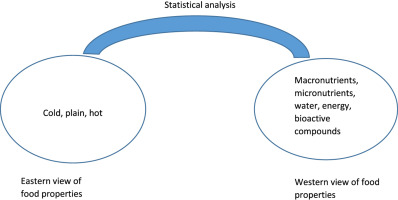Twohandsondeck
Member
- Joined
- Apr 22, 2019
- Messages
- 809
In accordance with traditional Chinese medicine, all foods fall on a spectrum of "yin" or "yang." The notion is that a "yin" food is generally cooling and a "yang" food is generally warming. Ideally, when these are kept in balance, symptoms of an excess of either "yin" or "yang" can be resolved.
I came across a chart some time ago which places (nearly) all food options somewhere between "extreme yang" and "extreme yin," found here:
As you might imagine, meat & eggs are "yang" and white sugar & bread are "yin."
Piggybacking on this chart, I have divided the vitamins and minerals as "yin" or "yang" as follows:
Yin
Calcium
Potassium
Vitamin K1
Manganese
Molybdenum
Iodine
Vitamin C
Chromium
Beta carotene and other carotenoids (vitamin A in plants)
Vitamin E
Vitamin D2 and D3 (as 'storage' forms)
Yang
All B vitamins
Vitamin K2
Zinc
Selenium
Copper
Iron
Sodium
Chloride
Boron
Phosphorus
Retinol (pre-formed vitamin A )
Vitamin D from sunlight working with cholesterol (active form)
...
I share for the sake of your consideration when supplementing any of these things in concentrated doses that the tenets of traditional Chinese medicine might paint a clearer picture of how your health may continually improve.
I came across a chart some time ago which places (nearly) all food options somewhere between "extreme yang" and "extreme yin," found here:
As you might imagine, meat & eggs are "yang" and white sugar & bread are "yin."
Piggybacking on this chart, I have divided the vitamins and minerals as "yin" or "yang" as follows:
Yin
Calcium
Potassium
Vitamin K1
Manganese
Molybdenum
Iodine
Vitamin C
Chromium
Beta carotene and other carotenoids (vitamin A in plants)
Vitamin E
Vitamin D2 and D3 (as 'storage' forms)
Yang
All B vitamins
Vitamin K2
Zinc
Selenium
Copper
Iron
Sodium
Chloride
Boron
Phosphorus
Retinol (pre-formed vitamin A )
Vitamin D from sunlight working with cholesterol (active form)
...
I share for the sake of your consideration when supplementing any of these things in concentrated doses that the tenets of traditional Chinese medicine might paint a clearer picture of how your health may continually improve.

